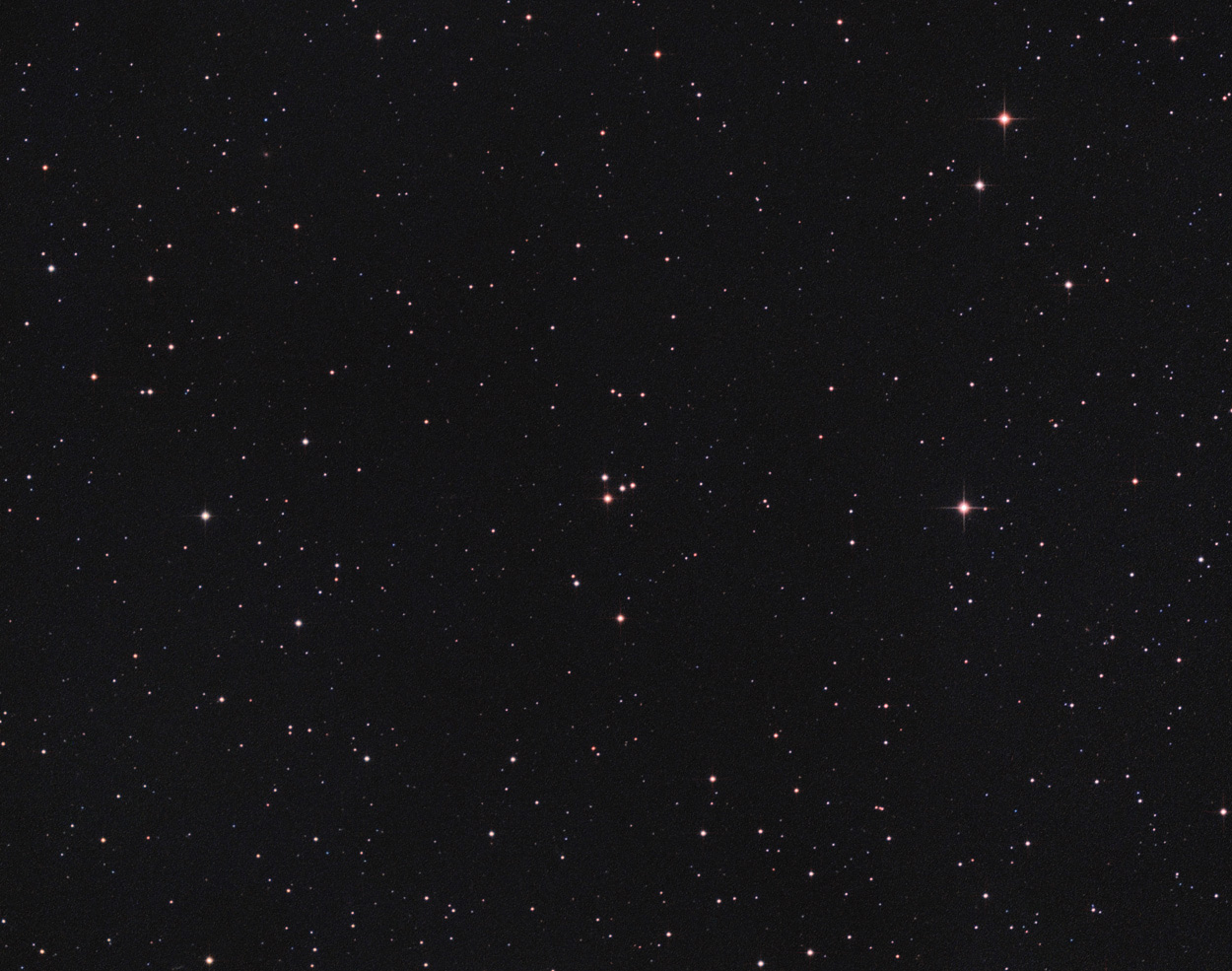
| HOME |
MESSIER 73
ASTERISM IN AQUARIUS
(Image Centred at RA 21h:00m / DEC 12:32)

September 2022 - Home Backyard in Martinez, Buenos Aires, Argentina
DATA
Type: Asterism
Apparent Magnitude: 8.9
Apparent diameter: 2,8 arc minutes
Distance: 2500 light years
IMAGE INFORMATION
TELESCOPE: 8" Orion Optics UK Mirror with Televue Paracorr (1150 mm focal length)
CAMERA: QSI 583 WS
FILTERS: Baader LRGB
SKY CONDITIONS: Urban Skies
EXPOSURES:RGB (15,15,15)
OBJECT DESCRIPTION AND IMAGE SESSION
M73 was discovered by Charles Messier in 1780 who originally described the object as a cluster of four stars with some nebulosity. Much later observations by John Herschel could not find any nebulosity. Moreover, Herschel noted that the designation of M73 as a cluster was questionable. Nonetheless, Herschel included M73 in his General Catalogue of clusters, Nebulae, and galaxies, and John Dreyer included M73 when he compiled the New General Catalogue.
M73 was once treated as a potential sparsely populated open cluster, which consists of stars that are physically associated in space as well as on the sky. The question of whether the stars were an asterism or an open cluster was a matter of debate in the early 2000s. The controversy was resolved in 2002, when M. Odenkirchen and C. Soubiran published an analysis of the high resolution spectra of the six brightest stars within 6 arc minutes of the centre point. They demonstrated that the distances from the Earth to the six stars were very different from each other, and the stars were moving in different directions. Therefore, they concluded that the stars were only an asterism.